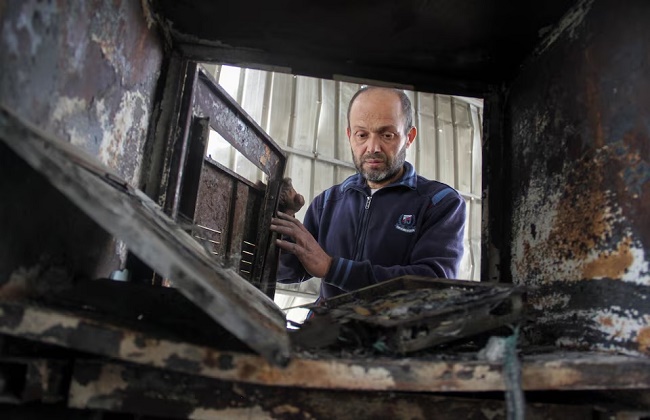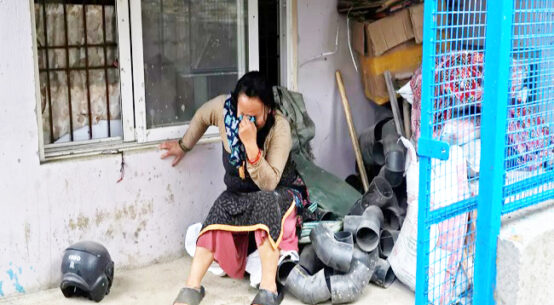
Mohammed Al Safi said his business making bedding and mattresses in the Gaza Strip provided a decent living and employed 10 people until it was destroyed during an Israeli raid. Today, he depends on aid to survive – if he can find any.
Safi, 51, said the fruits of 30 years of work had been lost in a single day. “I used to support myself, support my father, support my children … We lived a good life, decent life,” Safi said.
“When you lose your source of income, you are destroyed and those around you are destroyed,” he said, inspecting damaged and charred machinery at his factory in the Jabalia refugee camp in the north of the small Palestinian enclave.
It is a snapshot of the vast damage done to the economy of Gaza during an Israeli air and ground onslaught that has turned much of the besieged, coastal territory into a wasteland, particularly in the north, over the last six months.
The war erupted on Oct. 7 when militants of Gaza’s ruling Islamist group Hamas stormed over the border into Israel in an attack that killed some 1,200 people and resulted in the abduction of another 253, according to Israeli tallies.
Jabalia is located in northern Gaza, part of the territory where the world’s hunger watchdog has said famine is imminent.
It is the largest of the Gaza Strip’s eight cinder-block refugee camps – which date to the 1948 war of Israel’s founding – with some 116,000 registered refugees according to the U.N.
Many of Jabalia’s residents rejected Israeli calls to evacuate and stayed put despite some the heaviest bombardment campaigns to hit the territory in the past six months.
UNRWA, the United Nations agency for Palestinian refugees, currently estimates that the population of northern Gaza and Gaza City governorates is up to 300,000.
Safi said his business was destroyed in a raid into his Jabalia neighbourhood about two months ago.
“You had a factory that you worked in, which is gone. What will you become? You beg? This is destruction. It is economic destruction,” he said.
The International Labour Organization says 90% of jobs have been lost in Gaza’s private sector in the six months since the war erupted.
ILO Regional Director for Arab States Ruba Jaradat told Reuters that most businesses in Gaza have suffered from damage in infrastructure, including shops, warehouses and factories.
“Businesses have been severely affected with the destruction of infrastructure, so I would say, supply chains have stopped. There is no economic activity,” Jaradat said.
Salem Awad Rab’a had a mobile phone shop in Jabalia employing six people until the building where it was located was struck at the start of the war. The father of five said he has resorted to borrowing to meet his family’s needs.
“Life was normal and we didn’t need (to rely on) anyone until this disaster happened … Our source of livelihoods was destroyed,” Rab’a said at his burnt-out shop.
Israel’s retaliation has killed more than 33,000 people, with thousands more still unrecovered in the rubble, according to Gaza health authorities. Most of the territory’s 2.3 million people are now homeless.
Long blockaded by Israel, Gaza’s economy had struggled for years before the current conflict, suffering one of the world’s highest unemployment rates.
The economic shock, opens new tab inflicted by the latest war – the deadliest in decades of Israeli-Palestinian conflict – is one of the largest observed in recent history, the World Bank and the United Nations said in a recent report.
As of Jan. 31, it said, the enclave had suffered some $18.5 billion of damage to critical infrastructure – equal to 97% of the GDP in 2022 of Gaza and the West Bank, where Palestinians exercise limited self-rule under Israeli military occupation.

